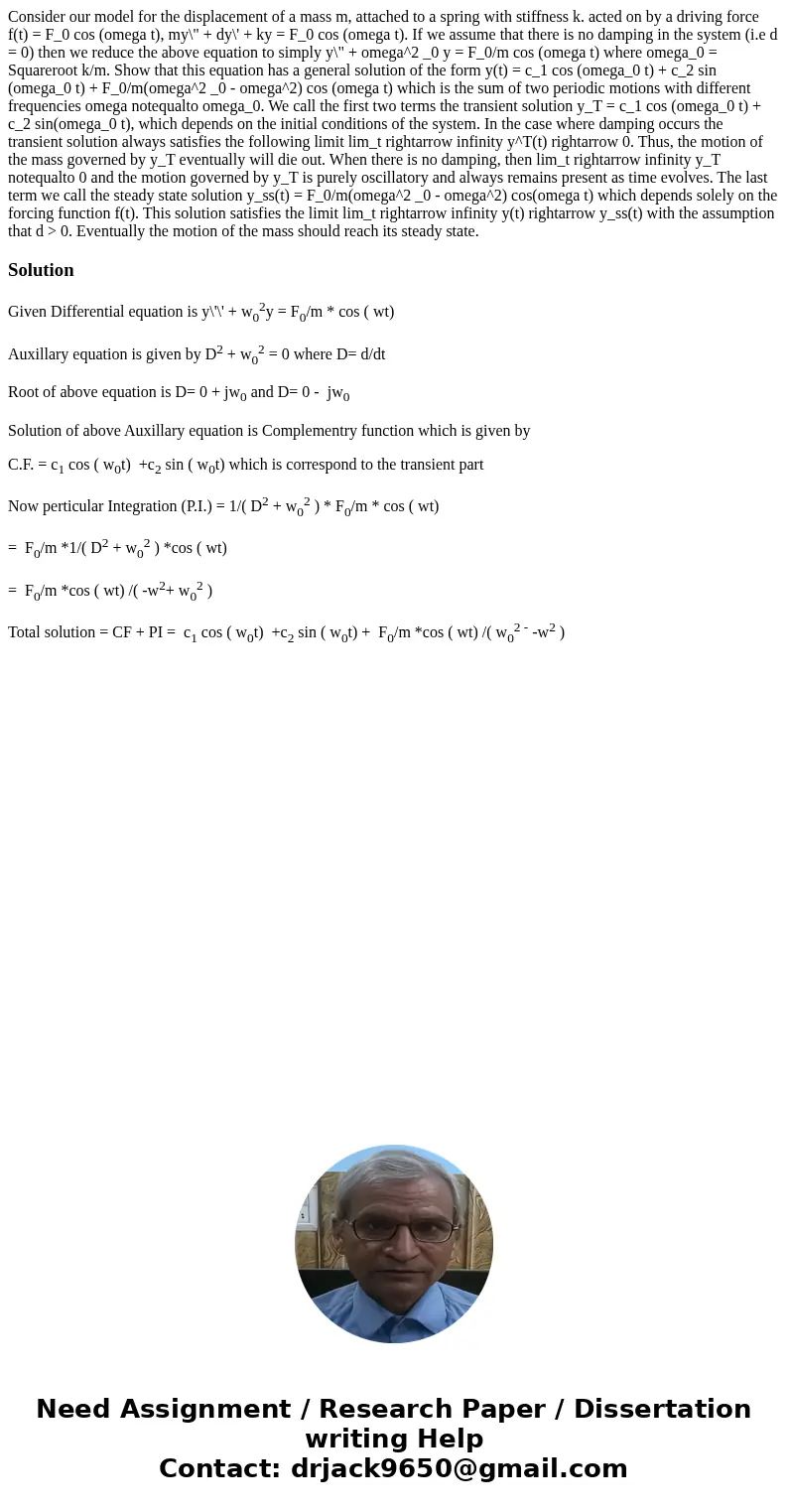Consider our model for the displacement of a mass m attached
Consider our model for the displacement of a mass m, attached to a spring with stiffness k. acted on by a driving force f(t) = F_0 cos (omega t), my\" + dy\' + ky = F_0 cos (omega t). If we assume that there is no damping in the system (i.e d = 0) then we reduce the above equation to simply y\" + omega^2 _0 y = F_0/m cos (omega t) where omega_0 = Squareroot k/m. Show that this equation has a general solution of the form y(t) = c_1 cos (omega_0 t) + c_2 sin (omega_0 t) + F_0/m(omega^2 _0 - omega^2) cos (omega t) which is the sum of two periodic motions with different frequencies omega notequalto omega_0. We call the first two terms the transient solution y_T = c_1 cos (omega_0 t) + c_2 sin(omega_0 t), which depends on the initial conditions of the system. In the case where damping occurs the transient solution always satisfies the following limit lim_t rightarrow infinity y^T(t) rightarrow 0. Thus, the motion of the mass governed by y_T eventually will die out. When there is no damping, then lim_t rightarrow infinity y_T notequalto 0 and the motion governed by y_T is purely oscillatory and always remains present as time evolves. The last term we call the steady state solution y_ss(t) = F_0/m(omega^2 _0 - omega^2) cos(omega t) which depends solely on the forcing function f(t). This solution satisfies the limit lim_t rightarrow infinity y(t) rightarrow y_ss(t) with the assumption that d > 0. Eventually the motion of the mass should reach its steady state.
Solution
Given Differential equation is y\'\' + w02y = F0/m * cos ( wt)
Auxillary equation is given by D2 + w02 = 0 where D= d/dt
Root of above equation is D= 0 + jw0 and D= 0 - jw0
Solution of above Auxillary equation is Complementry function which is given by
C.F. = c1 cos ( w0t) +c2 sin ( w0t) which is correspond to the transient part
Now perticular Integration (P.I.) = 1/( D2 + w02 ) * F0/m * cos ( wt)
= F0/m *1/( D2 + w02 ) *cos ( wt)
= F0/m *cos ( wt) /( -w2+ w02 )
Total solution = CF + PI = c1 cos ( w0t) +c2 sin ( w0t) + F0/m *cos ( wt) /( w02 - -w2 )

 Homework Sourse
Homework Sourse